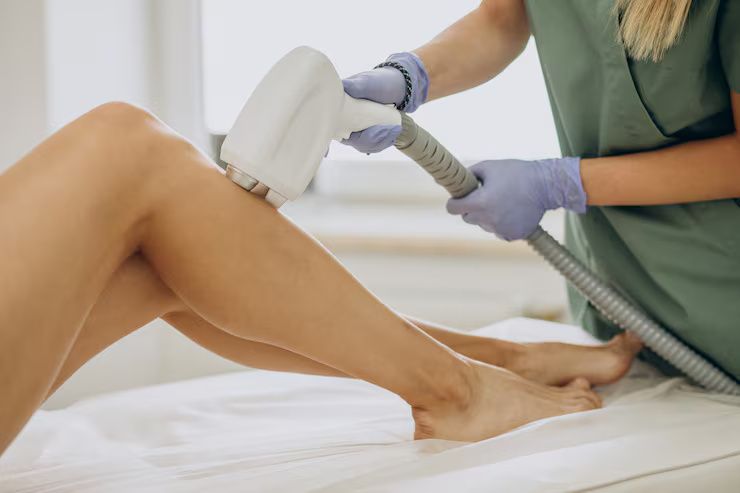Laser hair removal is a non-invasive cosmetic procedure that uses light energy to target and destroy hair follicles, reducing hair growth over time. Originally developed in the 1990s, it has become increasingly popular due to its effectiveness and long-lasting results compared to shaving or waxing.
It’s commonly used on the face, legs, arms, underarms, bikini area, and back. With advancements in technology, many at-home options now complement professional clinic treatments.

Importance – Why this method matters today and who it helps
Hair removal has long been a part of personal hygiene and grooming routines, but traditional methods like waxing and shaving come with frequent repetition, irritation, and ingrown hairs. Laser hair removal offers:
-
Long-term hair reduction
-
Fewer ingrown hairs
-
Minimal maintenance after sessions
-
Precision treatment for all skin types
This treatment is especially valuable for:
-
Individuals with excess hair due to hormonal imbalances (e.g., PCOS)
-
Those with sensitive skin prone to razor bumps
-
People seeking a convenient grooming routine
As more individuals seek low-maintenance, time-saving grooming methods, laser hair removal continues to be in high demand.
Recent Updates – Trends and advancements in 2024–2025
Recent innovations have improved both safety and comfort in laser hair removal. Here’s what changed over the last year:
-
Cooling Technology (2024): Many new machines include built-in cooling tips to reduce discomfort during treatment.
-
Expanded Skin Tone Compatibility: Devices now better treat darker skin tones using specific wavelengths like Nd:YAG lasers.
-
FDA-cleared At-Home Devices: Brands like Braun, Tria, and Philips Lumea introduced user-friendly machines in 2024.
-
Personalized Laser Sessions: Clinics now tailor sessions based on hair density and color mapping software.
More dermatologists are also offering consultation apps to pre-screen patients remotely before clinic visits.
Laws or Policies – How regulation applies around the world
United States
-
The FDA regulates laser devices used for hair removal under medical device classifications.
-
Only licensed professionals (often estheticians or nurses) may operate lasers, depending on state laws.
United Kingdom
-
Treatments must follow Care Quality Commission (CQC) standards.
-
Clinics must ensure operators are trained and certified, though it’s not always mandatory to be medically licensed.
Australia
-
Regulation varies by state, but some require medical oversight or laser safety certification.
-
Devices must comply with Australian Radiation Protection and Nuclear Safety Agency (ARPANSA) guidelines.
India
-
Clinics must obtain a Cosmetology or Dermatology license, and laser devices should be CDSCO-approved (Central Drugs Standard Control Organization).
It’s always best to verify provider qualifications and equipment approval before undergoing treatment.
Tools and Resources – Helpful apps, services, and information
Whether you’re researching treatment or planning to buy an at-home device, here are helpful resources:
Trusted Websites
-
FDA Medical Devices Database – Check if a laser model is cleared
-
Mayo Clinic – Laser Hair Removal Guide – Medical advice and recovery insights
-
American Academy of Dermatology (AAD) – Educational content and safety advice
-
NHS Laser Treatment Page – UK-based information and risks
Apps & Tools
-
SkinVision – Scan moles and monitor skin health before cosmetic procedures
-
Fresha – Book appointments at certified salons and clinics globally
-
Skincare Regimen Trackers – Apps like Skin Bliss for aftercare logging
At-Home Device Brands (Popular in 2025)
-
Philips Lumea
-
Braun Silk-expert Pro 5
-
Tria Beauty Laser 4X
-
Ulike Sapphire IPL
(Ensure they are FDA or CE approved)
FAQs – Common questions about laser hair removal
Q1. Is laser hair removal permanent?
No, it offers permanent hair reduction, not permanent removal. Hair grows back finer and slower after multiple sessions.
Q2. How many sessions are needed?
Typically 6–8 sessions, spaced 4–6 weeks apart, followed by maintenance treatments.
Q3. Is laser hair removal safe for all skin types?
Newer lasers, like Nd:YAG, are safe for darker skin. A consultation can confirm suitability.
Q4. Are at-home laser devices effective?
Yes, FDA-cleared devices can be effective for lighter skin and darker hair, but results take longer than professional treatment.
Q5. Does laser hair removal hurt?
It can feel like a rubber band snap. Most machines now offer cooling tips or numbing creams to reduce discomfort.
Final thoughts
Laser hair removal is a widely accessible and effective method to reduce unwanted hair, offering long-term results with fewer side effects than traditional methods. With ongoing technological improvements, treatments have become safer and more inclusive for various skin tones and hair types.
Whether opting for professional sessions or exploring at-home devices, it’s essential to understand your skin, research thoroughly, and consult a certified provider. With the right guidance, laser hair removal can be a practical, long-term grooming solution.